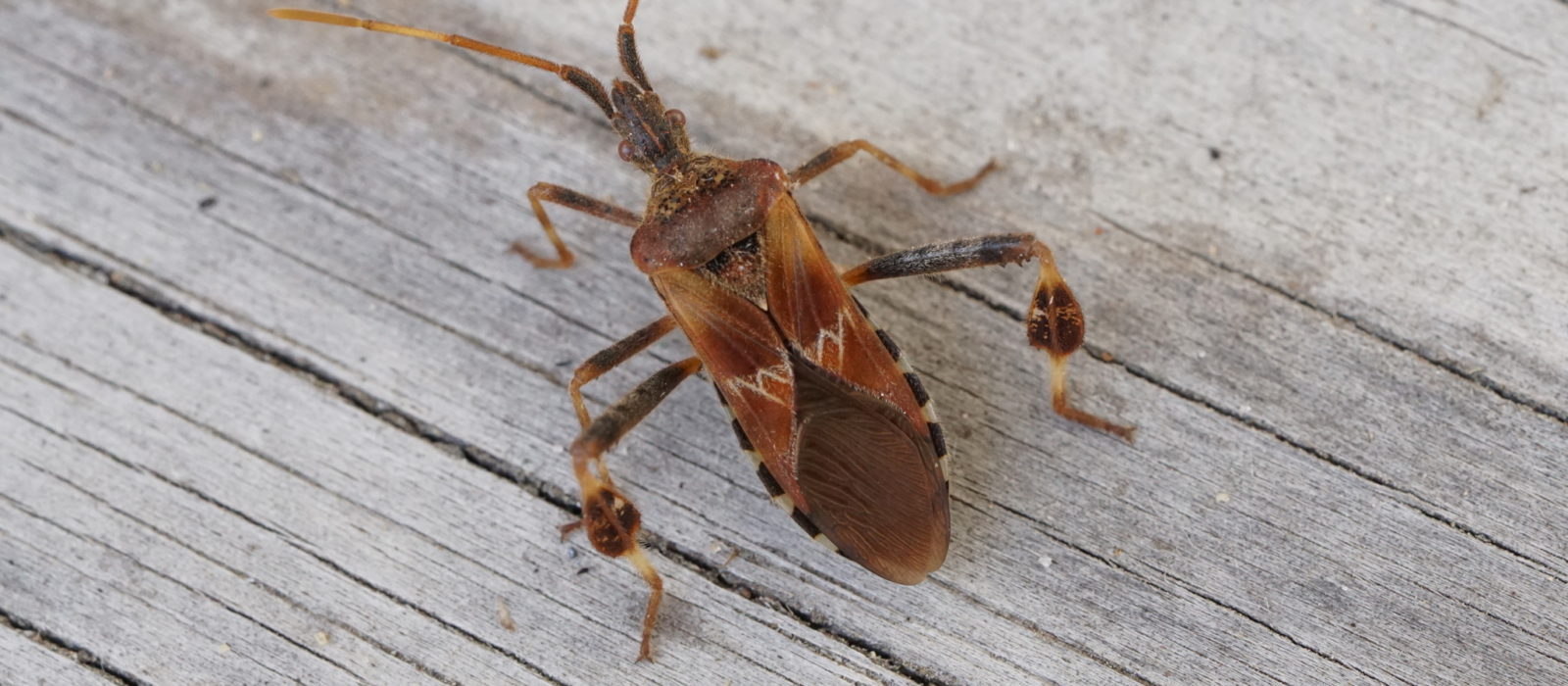Hemiptera
A large, diverse order (Bugguide.net reports more than 10,000 species in about 1,600 genera in North America), Hemiptera has received very little attention from naturalists on Martha’s Vineyard, and we are unaware of any significant studies of this order on the island.
The Hemiptera, incorporating groups as different as aphids, water striders, stink bugs, cicadas, and leafhoppers, exhibit astonishing diversity in appearance and life history. Some Hemipterans are primarily aquatic. Others have highly developed sound-production apparatuses. As an order, Hemipterans show considerable talent for dispersal, either on their own or as hitch-hikers on human commerce. Some species are serious pests in agricultural or other contexts. Hemiptera range from almost invisibly tiny to very large: the cicadas are among the most massive insects that occur on Martha’s Vineyard. In short, this is a fascinating group of great importance in both biological and economic terms.
In assembling the associated checklist of Vineyard species, we’ve relied almost entirely on “research-grade” observations from iNaturalist.org. We recognize that this is an imperfect basis for a checklist. But given the importance of this taxonomic group and the absence of any meaningful information about its representatives on Martha’s Vineyard, we feel that an imperfect checklist is considerably better than no checklist at all. In some cases, we have included entries at the genus level, when we are confident of the genus but cannot determine the species. Perhaps the island’s Hemiptera will eventually receive attention from capable specialists; in any case, we hope that the accumulation of data from even amateur observers will gradually improve our understanding. At present, our checklist includes 80 species, though in some cases, we have only a vague idea what those species are. Common names are from iNaturalist, but for many species in this order, no established common name exists.
There are plenty of Hemiptera that are distinctive, easy to observe, and easy to identify. But taken as a whole, this is a very difficult order for study by amateur naturalists. Many groups are poorly known even by specialists, and even among the better-known taxa, reliable identification from photographs is often difficult or impossible. The difficulty of identifying Hemiptera from photographs results in some quirks in the checklist. In a few cases, all we can provide is an identification to the tribe level, plus a common name that applies to any of a range of genera and species.
The broad-headed bug (Alydidae) genus Alydus also posed a challenge. One species, A. pilosulus, is included on the basis of four research-grade observations. This species is fairly distinctive as Hemiptera go, brownish in coloration and with sharp, almost spine-like rear corners to its pronotum. The seven other Alydus observations for Martha’s Vineyard, though, are of a different species, nearly black with a pilose (densely haired) and punctate (densely punctured) pronotum. These are listed in iNaturalist as A. eurinus. But the identification has not been confirmed for any of these observations, and the best information we can find suggests that no macroscopic characters exist that reliably distinguish A. eurinus from A. calcarata and A. tomentosum. Range probably helps distinguish those three species, with A. eurinus being the most likely and perhaps the only species of that trio possible in our region. But the situation seemed nebulous enough so that we incorporated those observations as “Alydus cf. eurinus,” hopefully capturing both the uncertainty of the actual identity and the fact that these observations clearly represent a second Alydus species in addition to pilosulus.
-Matt Pelikan; edited by Matt Pelikan, Ocober 8, 2024
